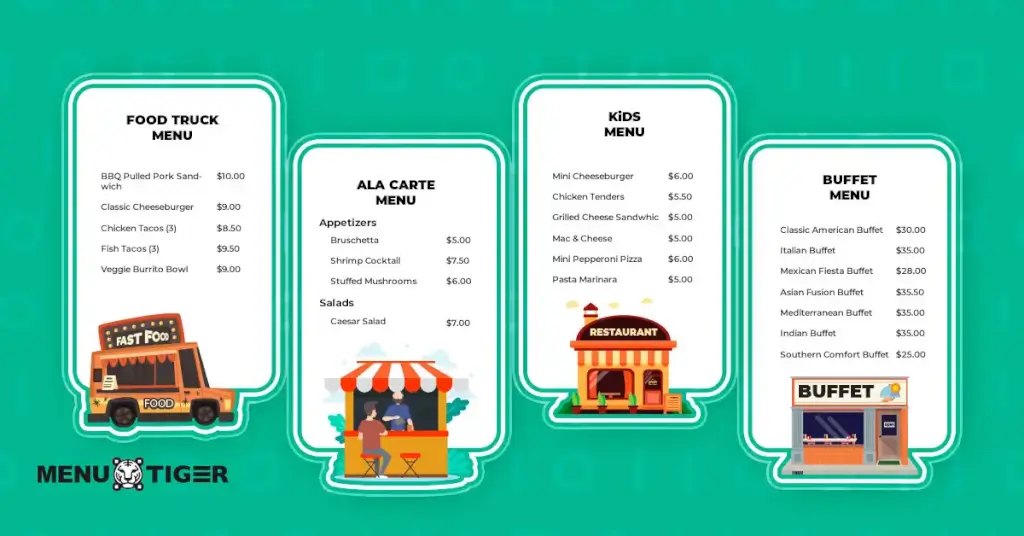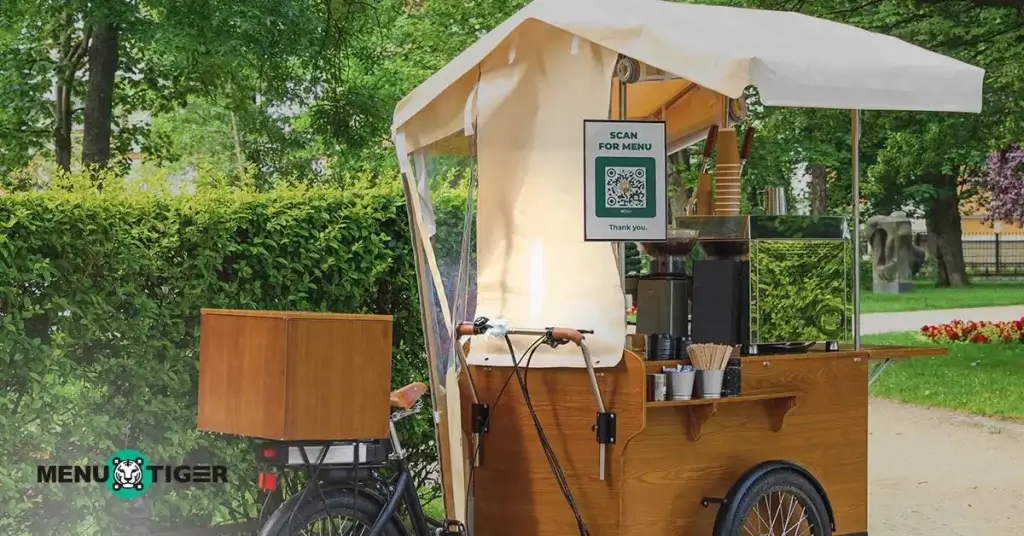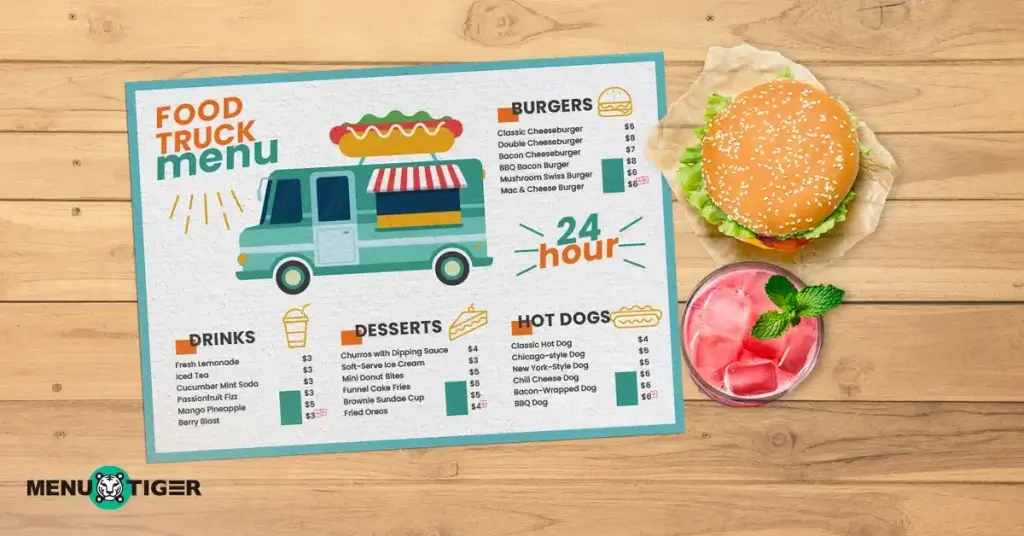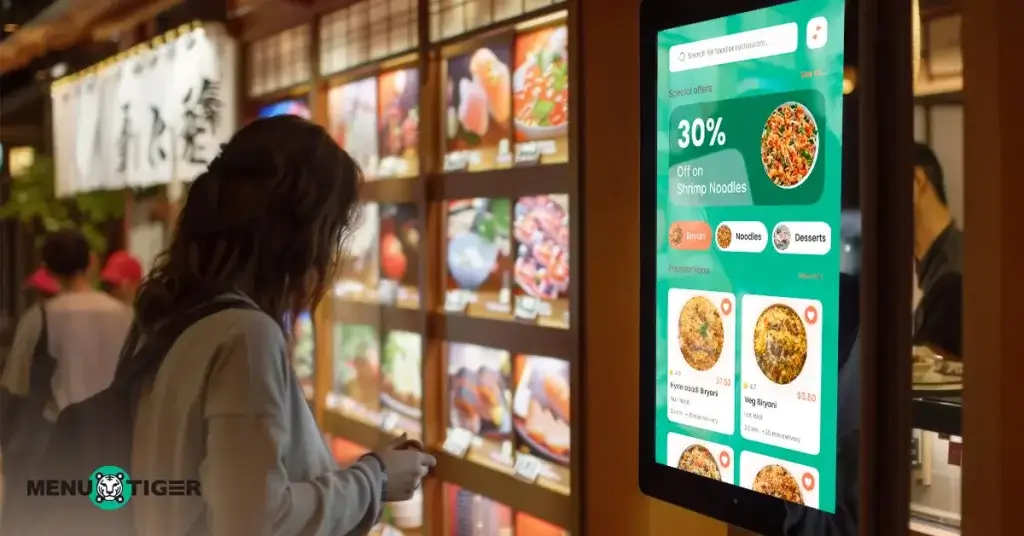
25 Types Of Menu To Help Your Restaurant Grow In 2025
Last Updated: December 4, 2025
Venturing into different types of menu is a huge advantage for a restaurant, especially if you’re starting out or wanting to give a twist from what you’ve been offering.
You’ll get to offer something new on the table aside from your regular ones, which encourages patrons to explore more to it, resulting for a good number in your sales revenue.
Aside from that, having to offer these menu conveniently using an online menu ordering system, tablet or kiosks, adds to their whole dining experience.
Here’s a rundown of various menu types and strategies to display them.
What’s the importance of knowing the various types of menu
Your menu encapsulates what your restaurant is all about.
Whether you’re going for fine dining or one of those fast casual restaurants in town, the food you serve tells your guests every bit and piece of your concept.
Aside from that, determining the kinds of menu influences how the kitchen is organized and operated.
For example, fixed menus streamline preparation and reduce waste as this follows a structured dining, where there are specific food you’ll serve.
More importantly, understanding different menus enables restaurant managers to pivot quickly in challenging times , where they cna shift to a limited or prix fixe menu to control inventory and reduced labor costs.
25 Various types of food menus at restaurants you may want to add to your restaurant
How many types of menu? You may wonder. To answer, there are a number of them, and deciding which one suits you the best.
To help you choose what’s best for your restaurant, here are the different kinds of menus that guarantee a boost.
À la Carte menu
À la carte is a French term that translates to “by the card” or “according to the menu.”
In the context of dining, this type of menu offers your customers individual dishes, each priced separately.
It allows them to customize their meal by choosing specific items according to their preferences and budget.
This is a good starter if you’re new in the business since it has a high potential for higher revenues through upselling opportunities and premium pricing.
You can also have control over your offerings with menu engineering strategies, where you can highlight high-margin items and strategically place them on your menu.
Fixed menu
If you opt to provide predetermined selection of menu items on a set price, this menu type is suited to you.
Unlike the À la carte menu, this provides a more curated dining experience, often in a multi-course format.
The downside here is the limited choice within each course, which may not be able to meet their demands in terms of their preferences.
But, it also offers you with pool of benefits starting with operational efficiency. Here, the kitchen can prepare certain dishes in bulk, reducing prep time and ingredient operations.
Additionally, revenues are predictable for this type of menu. A fixed price per guest offers consistent revenue, as every customer spends a set amount.
Also, it enhance your customer experience, allowing chefs to create a cohesive dining experience, showcasing their skills and creativity.
Table d'Hôte menu
Another type of menu to consider is the Table d’Hôte menu, also known as the host’s table or set menu.
This is a type of dining experience where your guests are offered a complete meal served at a communal table in inns or taverns.
It’s also has the same characteristics as fixed menu, where it has preselected combination of courses, offered at a fixed price per person.
If you offer catering services, this specifically ideal for special events like bacquets and weddings, where everyone is served with the same meal, simplifying the service and ensruring uniform quality.
Static menu
Living by its name, the menu remains consistent over an extended period, often featuring a set of selections of dishes that are permanently available to guests.
Common in restaurants, cafes, and fast-food establishments, static menus provide predictability for both guests and staff.
Through offering a reliable range of dishes, static menus build a recognizable brand identity and give diners confidence in knowing what to expect.
This is a good menu if you have popular signature dishes that allow customers to return for favorites they can count on.
Cycle menu
For this menu type, it’s a structured meal plan that repeats over a set period, typically one to four weeks, before restarting.
This is widely used in institutions like schools, hospitals, and senior living facilities but is also effective in corporate dining settings, catering services, and even some restaurants.
You can provide a variety of meals while ensuring consistent quality and effective cost management.
By repeating dishes on a cycle, food service operations can streamline purchasing, minimize and maintain quality standards, all while keeping offerings diverse and interesting for diners.
Seasonal menu
A seasonal menu emphasizes the best ingredients of each season, offering guests dishes that are fresh, flavorful, and aligned with nature’s cycles.
This approach not only enhances the dining experience but also support sustainable practices by prioritizing locally sourced ingredients and reducing the need for out-of-season imports.
With each change of season, a seasonal menu can offer new, exciting options, keeping the experience fresh and engaging for repeat guests while showcasing the restaurant’s commitment to quality and sustainability.
Digital menu

Tasting menu
A tasting menu offers a unique dining experience, allowing guests to explore a curated selection of dishes in smaller portions.
Typically designed by the chef, tasting menus showcase the restaurant’s signature flavors, seasonal ingredients, and creative techniques, taking diners on a culinary journey.
Whether it’s a high-end restaurant or a casual eatery, this can elevate the dining experience that can offer guests an opportunity to savor multiple courses that build on one another in flavor and presentation.
Brunch menu
Serving a brunch menu can be a powerful trick to attract regular guests, as brunch is often associated with relaxation, socializing, and indulgence.
This menu should offer a blend of breakfast and lunch food menu lists in your restaurant that cater to various tastes, dietary preferences, and times of the day.
Key categories to cover include dishes like scrambled eggs, omelets, and egg benedict. Unique spins, such as avocado benedict, truffle-infused eggs, or shakshuka, add an exciting twist.
Breakfast classics are also essential; pancakes, waffles, French toast, and crepes are popular choices, and flavors like lemon ricotta pancakes, red velvet waffles, or matcha French toast can make these items even more enticing.
Dessert menu
To wrap up the dining experience on a high note, having a good dessert menu list can leave a lasting impression and encourage guests to return.
This can also increase revenue by enticing customers to order a sweet treat, even when they didn’t plan to.
You can go for classic desserts, ice cream, and frozen treats, or mini and bite-sized desserts.
Beverage menu
You shouldn’t skip a well-designed beverage menu.
This is an essential component of a restaurant or bar, appealing to a wide range of customers and enhancing the dining experience.
It can show signature drinks, seasonal offerings, and unique flavors that complement the overall menu.
You can include menu categories such as cocktails, wine, beer, and spirits. This can be further broken down into house cocktails, signature beverages, wine, draft and bottled beers, and high-end spirits.
Kid’s menu
There are foods that kids can’t eat, especially those with strong spices. So, it’s wise for you to have something for them.
When crafting this kind of menu, consider that kids usually prefer simple flavors and familiar foods. However, simple doesn’t have to mean boring.
Kids love the feeling like they’re getting something “grown-up” but in a size that’s right for them. For instance, mini burgers, mini pizzas, or a small serving of spaghetti and meatballs.
You can also include finger foods like chicken nuggets, quesadillas, or veggie sticks, which are fun for kids to eat and reduce the need for utensils.
Tasting flight menu
If you’re looking for a fun and dynamic way to encourage guests to explore new flavors, experiment with different pairings, and experience a broader range of culinary delights, offering a tasting flight is a smart choice.
Here, it offers small portions of various dishes or beverages that your guests can sample a range of flavors and textures.
This is for diners to experience multiple items in one sitting and is often used to showcase your restaurant’s versatility, the complexity of certain ingredients, or a specific type of beverage.
Chef’s Choice menu
A chef’s choice menu serves a curated selection of dishes chosen by the chef, typically based on the day’s freshest ingredients, seasonal availability, or the chef’s culinary inspiration.
The menu is often a surprise or set of courses where customers experience what the chef prepares for the night.
This is actually an excellent way to provide a memorable, curated dining experience where you’re guests can trust the chef to guide them through an array of flavors and culinary techniques.
low-calorie / health menu
Another specialized offering is designed to provide nutritious and balanced meals that are lower in calories while still being flavorful and satisfying.
This menu type is ideal for customers looking to maintain or lose weight, eat cleaner, or simply make healthier choices without sacrificing taste.
Its focus is more on using healthy ingredients like whole grains, lean meats, and vegetables, as well as controlled cooking methods.
Happy hour menu
This menu type is a specially priced menu designed to attract guests during off-peak hours, usually in the late afternoon or early evening.
It typically features discounted drinks and small bites that are easy to share, creating a lively social atmosphere.
Happy hour menus are often simple but enticing, with your popular drinks and appetizers that encourage guests to linger, socialize, and potentially stay for dinner.
Breakfast menu
The menu list for this offers a combination of classic morning staples with diverse, contemporary twists.
Often, the breakfast menu can vary widely based on the type of establishment but generally focuses on comforting, energizing foods that are either quick and convenient or hearty and satisfying.
It can be egg-based dishes, grains and bread, bowls, breakfast meats, or lighter fare.
Buffet menu
This is spot on if you have a catering service offered.
Its variety of dishes allows guests to mix and match according to their preferences, from appetizers, salads, and main courses down to beverages.
To have a clearer vision of your buffet, align it with the specialty of your restaurant. This way, you’ll be able to serve it with the highest quality possible rather than shifting from a new cuisine.
This is also to attract those clients who prefer the cuisine you are offering, whether it’s Asian or Mexican.
Pop-up menu

For temporary events, such as market fairs, you can a pop-up menu is perfect for that.
You can create a more focused, exclusive experience that capitalizes on limited-time offerings and novelty.
Make sure that these dishes or treats are available only for the duration of the pop-up, creating urgency and intrigue that encourages attendees to visit your restaurant.
Also, it is mostly centered around a specific theme, event, or concept such as Summer Citrus or Mediterranean Night.
The food is mostly served on small plates, encouraging guests to sample several of your items.
Holiday menu
Having a menu specifically designed for holidays brings warmth, festivity, and seasonal cheer to your venue.
This is an opportunity to showcase limited-time offerings inspired by holiday flavors, ingredients, and themes that resonate with customers seeking a memorable seasonal experience.
When crafting your offerings, it is best that you use seasonal ingredients and festive decors to provide depth and alignment to the holiday you’re celebrating.
Regional menu
A regional menu is the best way to celebrate local culture and flavors.
This offers customers a taste of the area’s unique culinary experience as well as the traditions it has.
It can bring local ingredients to the forefront, creating an authentic and memorable experience for guests.
This can be a perfect menu if you operate in an area that attracts tourists, offering them a tour of the area they’re about to explore.
Specialty menu
Creating a specialty menu is a great way to highlight your unique offerings, which can set your business apart from your competitors.
You can focus on particular themes, ingredients, seasons, or dietary needs, making them ideal for showcasing curated selections or limited-time offers.
To effectively implement this, make sure that it is distinct from your regular menu. You can offer this in the cycle or on a specific period to attract curiosity in your target audience.
Interactive menu
This is one type of menu that not really focus on what structure or format of a menu you should offer but on how you can display them in a more dynamic, visually appealing way.
Here are some of the examples:
- Touchscreen tablets
These allow customers to scroll through your items, see photos, and read descriptions.
- QR code menus
Customers scan a QR code menu that takes them to an online interactive menu accessible on their smartphones.
- Interactive kiosks
Usually positioned at the entrance, allowing visitors to place orders before reaching the counter.
Incorporating this in your restaurant puts you at a greater advantage as it streamlines your operations, providing a high-quality customer service.

Food truck menu

If you want to expand your business to a mobile cart, you should have a food truck menu ready.
Food truck menu ideas often feature a few well-curated options that highlight unique flavors, quick preparation, and easy-to-eat dishes.
For instance, you can have tacos, burritos, gourmet burgers, and fries.
These menus need to be streamlined, focusing on specialty items that set the food truck apart while maximizing the use of limited space and equipment.
Gluten-free menu
This is a specialized menu designed to cater to customers who need to avoid gluten.
This type of menu focuses on non-gluten ingredients and fresh, whole foods.
Offering this profoundly promotes inclusivity, broadening your restaurant’s appeal and attracting those who have dietary restrictions.
Also, this is a competitive advantage with the growing popularity of gluten-free diets, offering a dedicated gluten-free menu sets the restaurant apart.
3 effective strategies to effectively display your choice of menu
Design with visual appeal and readability in mind
A visually appealing menu draws attention and creates a lasting impression.
First, the overall layout is crucial: it should be clean, organized, and easy to navigate. Consistent fonts, color schemes, and imagery can create a cohesive look that matches the atmosphere of your restaurant.
For instance, a fine dining restaurant might use elegant serif fonts and minimalist design, while a casual eatery might opt for vibrant colors and playful typography.
Don’t forget to be strategic when using colors, as this can also influence how customers perceive your menu — warm tones like red or orange can stimulate appetite, while blue and green tend to have a calming effect.
Also, make it easy for your customers to scan through the options without difficulty. This means using legible fonts, appropriate font sizes, and sufficient contrast between text and background.
Leverage digital menu boards and tablets

Having menu boards and a tablet menu advances your way of offering your menu to your guests.
It enhances both your customer experience and operational efficiency. It offers flexibility, interactivity, and a modern touch that can significantly upgrade the way you present your menu.
Using digital signage software enables restaurants to manage these displays with scheduled updates, dynamic content changes, and remote control capabilities across multiple locations.
So, whether you’re using digital boards in a fast-casual restaurant or tablets at each table in a full-service setting, these tools can transform how customers interact with your offerings.
Incorporate creative descriptions and upselling techniques
Using sensory-rich, descriptive language brings your menu items to life and makes them irresistible.
Instead of merely listing ingredients, focus on describing the flavors, textures, and presentation that make each dish special.
For instance, instead of labeling a dessert as “ Chocolate Cake,” try something like “ Decadent Dark Chocolate Cake” with “ velvety ganache and a hint of espresso,” or describe a salad not just as “ Fresh Greens” but as a “Crisp Garden Salad of Locally-sourced greens, tossed with a refreshing citrus vinaigrette.”
Don’t forget to encourage customers with add-ons and premium upgrades. For example, offer phrases likes, “add truffle oil drizzle for a rich, earth flavor,” or “Upgrade your steak to a prime cut for the ultimate indulgence.”
These options give customers a sense of customization and luxury while increasing ticket size.
Launch your menu using the MENU TIGER QR code menu software

Whether you're adding breakfast offerings or a kid’s menu, it always boils down to how you’ll be able to offer them to your guests in a way that makes them want to try more.
The good thing is that the MENU TIGER restaurant online restaurant system is feature-ready to provide you with assistance. It not only displays your menu but also streamlines the whole process of ordering them.
Here are lists of its functions and services:
- Online menu accessed through QR codes
Display your menu with the highest quality images and vivid descriptions through your customers’ mobile phones.
All they need to do is scan the a digital menu QR code placed on your tables and counters and it will directly lead them to your offerings in just seconds.
When implementing this, make sure that you train your staff to assist customers on how to scan a menu QR code for those customers who haven’t tried using it. This is to run the ordering process smoothly.
- Multilingual support
No need to worry for foreign visitors, as this smart menu software offers 31 languages to translate your menu into your guests’ native language.
This allows them to conveniently explore more of what you have, securing an addition to your revenue.
- E-payment alternatives
There’s no need for them to go to the counter or call a staff for the bill, as this advanced software does it for them.
They can pay directly after placing their orders through the various payment options, minimizing the long queues at the counter.
- Restaurant website
Expand your online presence through an easy-to-navigate website, where you can post information about your business, the food you offer, and even promotions and deals for your loyal patrons that greatly reflect your restaurant branding and personality.
You can also include your social media accounts for better reach and visibility.

Choose the best types of menu and be guaranteed a boost in your restaurant
With various types of menus, you’ll surely get the perfect addition to your restaurant that secures off-the-chart sales.
Whether it’s for kids, foodie enthusiasts, or your loyal patrons, having special offerings apart from your regular ones stimulates curiosity to explore what you have.
To easily navigate your new menu options, an online menu ordering system like MENU TIGER is designed with features and solutions to provide a better workflow and customer service.
So, head over to the website, sign up, and get your menus displayed with the highest quality.
FAQs
Chevy
Before joining MENU TIGER's Content Team, Chevy has been dabbling in literary arts for five years, specifically creative writing in a theatre company. She loves exploring her creativity through painting, photography, and contemporary dancing.


